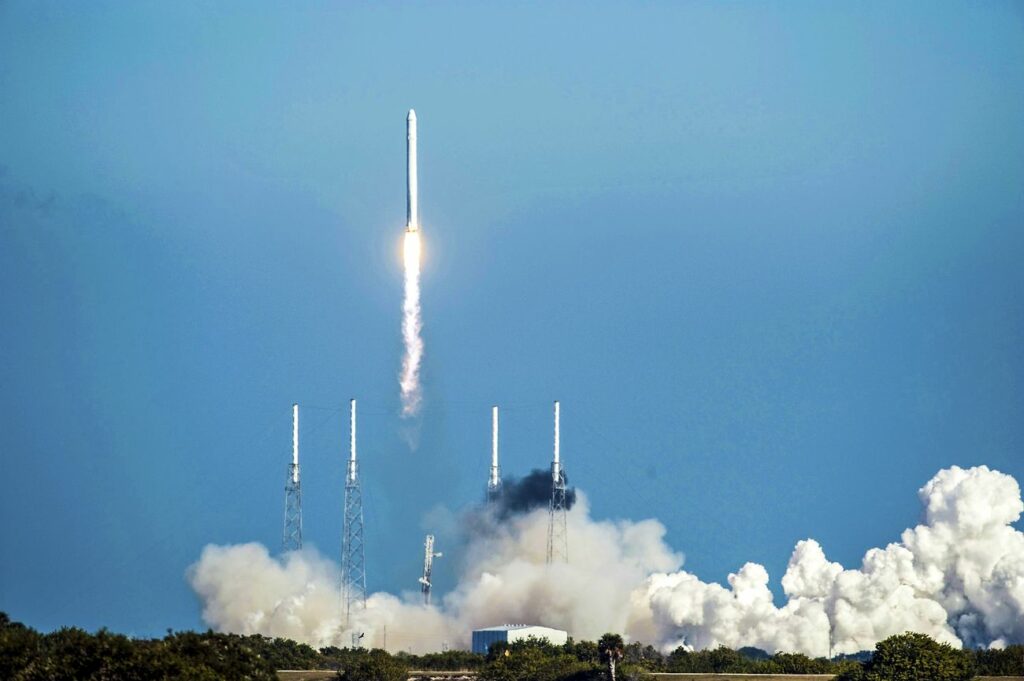18 Apr How Starlink is revolutionizing mobile communications worldwide
SpaceX’s satellite Internet is changing the way mobile communications work. In the future, there could be no more dead spots in the world. At a rocket launch in Cape Canaveral, I was able to get an impression of the technology.
And I am impressed. For years, companies have been working on reliable solutions for a satellite Internet. European providers were leading the way. But their solutions were mostly tied to specialized equipment. SpaceX, together with T-Mobile, wants to make it possible for the first commercially available smartphones in the U.S. to get reception via satellite in just a few months.
The scope of this technological innovation is not yet fully foreseeable. Mobile communications will probably have to be rethought. And there is the question of what it means when a new player from the USA controls a technology that is likely to be in demand worldwide. All competitors like OneWeb, SES Satellites or Project Kuiper are far behind Starlink.
Read the related article here (in German): Highspeed-Internet im Flugzeug: Musk baut Starlink deutlich aus
These are the most important questions and answers about mobile satellite communications

How does data transmission work for cell phones?
Data transmission on cell phones works via radio masts. Most smartphones have an integrated modem that transmits data via the radio masts. These radio masts are connected to the mobile network and send and receive signals to all devices in the vicinity. The data is transmitted in short pulses, which are then received and interpreted by the cell phone.
Why are cell towers so important?
Radio masts are essential for establishing a connection between smartphones and the mobile network. They ensure reliable and stable data transmission by providing a constant signal even in bad weather and over long distances. This makes them an important prerequisite for cell phones to function and for surfing the Internet on the move.
When were the first phones that could transmit data via satellite?
The first satellite phones that enabled data transmission via satellite were developed in the early 1990s. However, these phones were much more expensive than conventional cell phones and were not adapted to the mass market. Therefore, they never became as popular as other cell phones and were eventually pushed out of the market.
Why did satellite Internet fail on the mass market in the past?
Satellite Internet failed on the mass market in the past because it was much more expensive than conventional mobile services. It also requires special hardware to make satellite reception possible. The connection quality was also not as good as that of mobile networks, which made it unattractive to many users.
What is the approach of Starlink?
Starlink is a project by the SpaceX company that aims to create a worldwide satellite Internet. By deploying hundreds of small satellites orbiting the Earth in low orbit, the aim is to enable powerful and reliable connectivity for the general public.
How high do Starlink’s satellites fly above the Earth?
Starlink’s satellites orbit at an altitude of about 550 to 1250 kilometers above the Earth. This orbit is lower than most other satellites, which means they are closer to the Earth’s surface and its users. This allows the satellites to provide faster and more reliable connections.
How can Starlink make data transmission to smartphones possible?
Starlink can make data transmission to smartphones possible by having small satellites orbit the earth in a low orbit. The satellites can then communicate directly with the smartphone. This will enable a fast and reliable connection that allows stable data transmission.
How can satellite Internet change current mobile communications?
Satellite Internet can change current mobile communications by providing more reliable connections and faster data transfer rates. It can also be deployed in rural areas where cellular service is not available and provide much greater coverage. This could improve connectivity in remote areas and pave the way for new technologies such as autonomous driving and machine learning.


